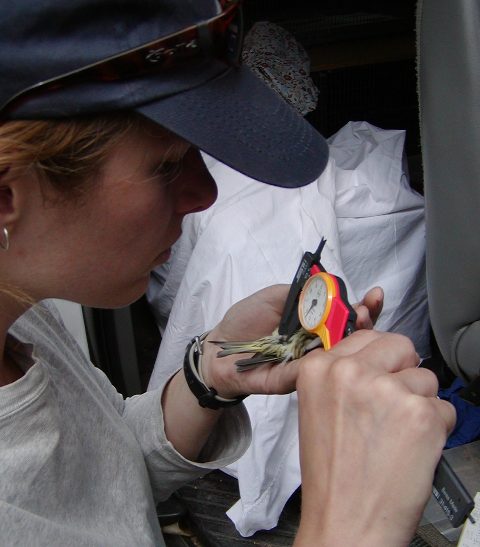
In a first-time collaboration, Loyola Marymount University has received two grants from the Santa Monica Bay Audubon Society to fund research projects in the Frank R. Seaver College of Science and Engineering.
A one-time gift to Watts Lab, directed by Heather Watts, assistant professor of biology at LMU, will help fund the study of the relationship of environmental changes on the behavior of individual birds.
“This grant will allow us to expand our research efforts to understand how birds cope with variation in their environment,” said Watts, who specializes in behavioral ecology and physiology. “We can track their response to changes such as fluctuations in food availability and temperature, and assess the impacts of environmental change on bird populations.”
The importance of the grant is underscored by the effect it has on LMU students. “LMU students are involved in all aspects of this research, so the grant will directly support student research activities,” said Watts. “For example, it will support continuation of a project studying the effects of increasing temperatures on breeding in house finches, a locally abundant bird species.”
A second, larger grant will provide a lifetime endowment gift to assist faculty and students in biology or environmental science whose research furthers the understanding of ecological, environmental and biological variables on birds and other wildlife. The money will, in part, fund student presentations at science conferences.
“We are enormously grateful to the Santa Monica Bay Audubon Society,” said Lynn Witherspoon, director of development for Seaver College. “Through an estate gift, past member Norma Foster left a sizable bequest to the organization. Because of her generosity, SMBAS chose to partner with LMU to fund research and activity that resonates with both institutions. Seaver College welcomes the opportunity to launch this promising partnership.”
The Santa Monica Bay Audubon Society gifts to LMU were among seven eco-projects that the society said cover a “balanced slate of projects including education, research, habitat restoration and the arts.”



